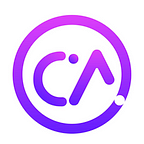An introduction to Cardstack: The $11m market cap protocol that is primed to become one of the pillars of Web 3.0
Having been on the hunt for a project with strong fundamentals and little recognition, I’ve finally found something I’m really excited about: the Cardstack protocol. At the time of writing Cardstack has a market cap of $11m, with a token ($CARD) whose price hovers around $0.004. Now I feel is the right time to share my thesis on this project, why I’m bullish on the token $CARD and why I also consider Cardstack an opportunity to enter the Web 3.0 landscape myself eventually by building something on it.
First of all, what is Cardstack?
Cardstack is a modular web 3 development framework that makes it easy for business to build dapps. In simple words, you can think of Cardstack as a form of Lego where instead of lego pieces (such as bricks, plates, wheels) we have cards (Card Pay, Card Space, Card Reward). Cards are the building blocks of the protocol and just like everything else on it, they are open source. Anyone can build and release a card which then can be used by others in their Web 3.0 app. Thanks to its modular nature, as the card ecosystem grows and the amount of modules increases, Cardstack slowly establishes itself as the medium that eliminates all transition friction into the promised land of web 3.0.
By combining different cards one will ultimately be able to rebuild the web 3.0 version of any app at minimum cost and with lowest possible barrier to entry: a decentralised social network, a decentralised Slack, launch a loyalty/early access program that bypasses cumbersome & invasive sign-up/registration processes, or pay freelancers from around the globe without having to jump through the hoops of different payment systems. This is an entirely new world when compared to what we have been accustomed to up until now. As cards proliferate, there will eventually be a card for everything and implementing a card will be as easy as installing an app or a Wordpress plug in. A card for identification, one for messaging, another one for hosting/managing data (like filecoin). Cards for various reputation systems, for rewards (for merchants), for task management and so on and so forth. As the protocol grows so does the amount of cards and the resourcefulness of the ecosystem as a whole. The key takeaway here however, and this is a big however, is that everything build via Cardstack is Web 3.0. In other words, in all apps, the user always owns their data which is encrypted onchain and requires no centralised party to be trusted.
The $CARD token
The CARD token is basically the utility token of the CARD ecosystem. Its most straightforward function is as payment method, or better, as settlement token for payments between users in various card dapps. One of the big end user problems Cardstack dapps solve is that of payments and fiat off/on ramps. An amazing feature is the ability of users to create virtual cards straight from the Card wallet which then can be used to buy a coffee in a local Starbucks store. The Card wallet is already out by the way, and a new version will be released soon.
Other use cases that will drive demand for the card token are its use in reward programs by businesses that will join the ecosystem but also as rewards by the protocol to early users similar to liquidity mining for DEXs. This is reportedly part of team’s short term plan to bootstrap commercial activity. Card staking (as well as burning) will also be possible in the future.
Card will be also burned in various situations such the card collected from merchant transaction fees, application fees and membership fees. Basically users pay the network in $CARD to list a token (their business token) or to upgrade their membership level and these tokens are then burned. In other words as userbase and adoption of various cardstack protocol features increases the deflationary pressure will also increase exponentially.
All things considered, I’m currently very excited about Cardstack because I find its approach to web 3.0 unique and very rich in flavors both for retail/end users as well as businesses/devs looking to transition into web 3.0 or to simply build dapps. The community is extremely small right now so if you see what I see then come be part of the community on Discord, Telegram or Reddit.
NB: None of this is financial advice.
